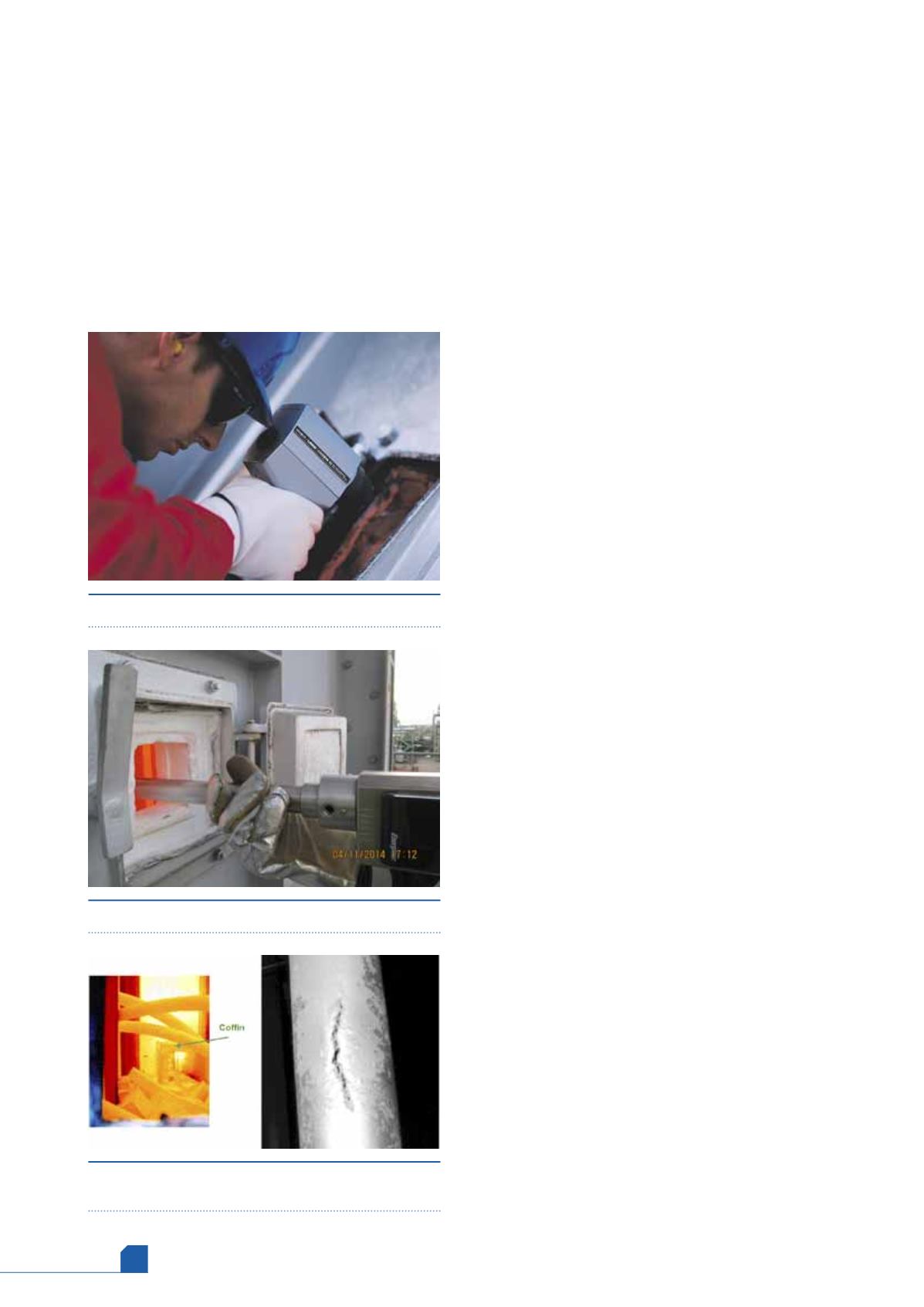
March
2017
HYDROCARBON
ENGINEERING
50
Hydrogen
Hydrogen production is critical to achieving the
hydroprocessing goals of a refinery. As middle distillate
processing continues to increase around the globe,
hydrogen production and availability continues to
become more strategic to the refining operation. In a
hydrogen plant, the steam methane reformer (SMR) is
the work horse in achieving the hydrogen production
demand. It needs to offer flexibility, while providing
efficient operation and avoiding responses to operating
conditions that can create unscheduled turnarounds
within the major hydroprocessing turnaround cycle. In
general, the monitoring of SMRs is still a dated
operation. Shift operators will look inside the firebox of
the reformer at some daily frequency and track the peak
tube wall temperatures using a single point optical
pyrometer (Figure 3).
Johnson Matthey monitoring technologies provide the
operator both a convenient and comprehensive snapshot
of the SMR firebox temperatures, as well as a continuous
monitoring of the SMR process side temperatures. The
reformer imager (Figure 4) provides 100 000s of
validated/high quality temperature readings from each
SMR firebox access point. These readings can be
compared and contrasted along the individual SMR tube
and three dimensionally across the SMR tubes and tube
rows. This offers the operator a high quality snapshot of
their reformer to determine areas to optimise their
reforming operation, whether in turndown, a seasonal
operating condition, or even gauging the ability to meet
the next major turnaround.
While the SMR firebox operation does manage the
reliability of the SMR, there are process side changes that
can impact reliability of the SMR during major turnaround
cycles. These can be feedstock slate changes, SMR
convection section changes, feedstock purification
changes, and the dynamic of transients in operation.
These changes and dynamics can impact operation
quickly (within 15 – 30 minutes of operation), which may
not be readily seen on the typical control indicators near
entrance and exit to the SMR. There is also a lag time for
the SMR firebox temperatures to respond to these
changes. This lag time has been enough to result in
damage to the SMR or at least severely damage the SMR,
forcing an unscheduled turnaround (Figure 5).
Johnson Matthey has developed CatTracker
TM
for
reformers with Daily Thermetrics to enable this process
side monitoring within the SMR tubes. By working with
Daily Thermetrics, this technology can be loaded into
SMR tubes using a patented technique enabling process
side monitoring within the SMR tubes. The CatTracker for
reformers is a multi-point thermocouple device that
provides the highest quality process readings within the
SMR tube. Placing the catalyst tracking technology in
2 – 4 tubes within a hydrogen plant SMR provides the
operator with a new ‘sight glass’ into the SMR operation.
The CatTracker responds more rapidly to SMR changes
than the SMR outside tube wall temperatures. These
readings are of high thermocouple quality and have been
validated with established SMR modelling. The response
sensitivity is further seen with the tracker for reformers
temperature response to a change in feedstock
purification and sulfur slip to the SMR (Figures 6 and 7).
There are other operations within a hydrogen plant
that can impact turnarounds, such as process gas boiler
leaks and high temperature shift fouling. The potential
cost and time savings of identifying or verifying a
potential mechanical or process related problem prior to
a major turnaround is substantial. It requires extensive
plant process data analysis, online process diagnostics and
modelling of potential process changes and the probable
Figure 5.
Catastrophic SMR tube failure and SMR
single tube failure.
Figure 4.
Reformer imager device.
Figure 3.
Single point pyrometry.








